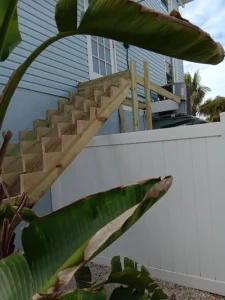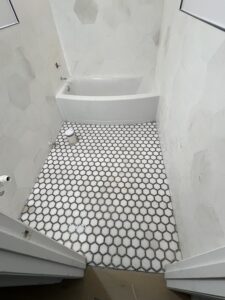
Textured walls are a terrific way to give your home interiors more depth and appeal. There are different types of wall textures that give a room a distinct character but also cover drywall finish flaws. Whether you’re opting for drywall repair or installation, wall textures have unique characteristics that set an impact on how a room feels and looks. In this article, we’ll discuss what wall textures are and how to choose the right wall texture for your space.
What are Wall Textures
A wall texture refers to the surface finish or treatment applied to interior or exterior walls to create visual interest, depth, and texture. Wall textures can vary widely in style, ranging from smooth and sleek finishes to more rugged and textured surfaces. These textures are achieved using various techniques, materials, and tools, and they play a crucial role in enhancing the overall aesthetics of a room or a property. Some common types of wall textures include:
- Smooth Finish
- Textured Finish
- Plaster Finishes
- Decorative Techniques
- Natural Materials
10 Types of Wall Textures For Your Home
Wall textures play a significant role in interior and exterior design, influencing the ambiance, style, and functionality of a space. They can help conceal imperfections, improve acoustics, and reflect or absorb light, depending on the desired effect. Adding a unique wall texture to a room, or even to an accent wall, may give personality to your kitchen, living room, or bedroom that a simple color or paint cannot.
Here are common types of wall textures available for your home.
- Smooth Finish — Smooth walls have a flat and even surface without any visible texture. This type of finish is commonly achieved through techniques such as sanding, skim coating, or using smooth wall paints.
- Popcorn Texture — Popcorn texture, also known as acoustic or cottage cheese texture, features small, rounded bumps on the surface of the wall. It was popular in the mid-20th century for its acoustic properties, but its use has declined in recent years due to aesthetic concerns and health risks associated with asbestos in older versions.
- Orange Peel Texture — Orange peel texture resembles the surface of an orange peel and consists of small, slightly raised bumps on the wall. This texture is achieved by spraying the joint compound onto the wall and lightly flattening it with a trowel or drywall knife.
- Knockdown Texture — Knockdown texture involves spraying joint compound onto the wall and then lightly knocking it down with a trowel or drywall knife to create a flattened, mottled texture. It adds depth and visual interest to the wall while providing a smoother finish than some other textured options.
- Skip Trowel Texture — Skip trowel texture is a hand-applied technique that creates a subtle, hand-crafted look on the wall. It involves applying a joint compound with a trowel in a skipping or swirling motion, resulting in a textured surface with variations in thickness.
- Venetian Plaster — Venetian plaster is a luxurious wall finish that involves applying multiple layers of thin plaster to create a smooth, polished surface with a slight sheen. It can be tinted in various colors and polished to a high gloss for a sophisticated look.
- Stucco Texture —-: Stucco texture is a traditional wall finish made of cement, sand, and lime that is applied in multiple layers to create a rough, textured surface. It is commonly used on exterior walls but can also be used indoors for a rustic or Mediterranean-inspired look.
- Swirl Texture —- Swirl texture is created by applying joint compound in a swirling motion with a trowel or brush. This technique leaves a distinctive pattern on the walls, offering a unique and visually appealing texture.
- Slap Brush Texture —- Slap brush texture involves using a wide brush to slap or stipple joint compound onto the walls, creating a random, raised texture. It can add a bit of drama and visual interest to the wall surface.
- Comb Texture — Comb texture imprints shapes and lines into the drywall to provide a repeating sequence of patterns. Though it seems complicated, the procedure is straightforward. A drywall trowel with evenly spaced teeth, a roller, and drywall compound are needed to produce the textured comb wall. The trowel is used to create lines in the drywall after the wall has been coated with drywall compound.
How To Choose The Perfect Type of Wall Textures For Your Walls
Wall textures not only enhance the aesthetic appeal of your home but also provide practical benefits such as hiding imperfections, improving acoustics, increasing durability, and allowing for creative expression and customization.
Choosing the right wall texture for your home involves considering various factors, such as the overall design style, the function of the space, personal preferences, and practical considerations. Here are some tips to help you make an informed decision:
- Consider the Design Style — Start by identifying the design style of your home. Whether it’s modern, traditional, rustic, or eclectic, the wall texture should complement the overall aesthetic. For example, smooth finishes may suit contemporary interiors, while textured plasters or wood paneling may enhance a more rustic or traditional look.
- Evaluate the Room’s Function — Think about the purpose of the room where the texture will be applied. For high-traffic areas like hallways or entryways, consider durable textures that can withstand wear and tear. In bedrooms or living rooms, prioritize textures that promote relaxation and comfort.
- Assess Lighting and Space — Consider the natural light levels and the size of the room. Lighter textures and colors can make small rooms feel more spacious, while darker textures may add warmth and coziness to larger spaces. Additionally, certain textures may reflect or absorb light differently, affecting the ambiance of the room.
- Think About Maintenance — Take into account the ease of maintenance and cleaning when choosing a wall texture. Textures with deep crevices or intricate patterns may trap dust and dirt more easily, requiring more frequent cleaning. Smooth finishes or washable paints may be more practical for areas prone to spills or stains.
- Consult with Professionals — If you’re unsure about which texture to choose or how to achieve a particular look, consider consulting with contractors, painters, or interior designers who specialize in wall textures. They can provide expert advice and recommendations based on your specific needs and preferences.

FAQs
How do I choose the right wall texture for my space?
Homeowners often seek guidance on selecting a texture that complements their interior design style, suits the room’s function, and aligns with personal preferences. Offering advice on considering factors such as aesthetics, durability, ease of maintenance, and practicality can help answer this question.
Can I apply wall texture myself, or do I need to hire a professional?
Many individuals want to know if they can tackle wall texturing as a DIY project or if it’s best left to professionals. Providing insights into the complexity of different texturing techniques, required tools and materials, and potential challenges can help clarify whether DIY is feasible.
How do I repair or remove existing wall texture?
Homeowners often inquire about techniques for repairing damaged or outdated wall textures, as well as methods for removing textures they no longer want. Addressing common repair methods, tools needed, and considerations for removal, such as asbestos testing for older popcorn textures, can be helpful.
Are there alternative options to traditional wall textures?
Some individuals may be interested in exploring alternative ways to achieve textured effects on their walls, such as using wallpaper, decals, faux finishes, or decorative panels. Providing information on these options, including their pros and cons compared to traditional texturing methods, can address this inquiry.
Conclusion
Adding texture to your walls and ceilings is a wonderful way to update your interior and give your house a vibrant aesthetic appeal. Although there are countless types of wall textures, make sure to choose the wall texture that best suits your room and is applied appropriately. If you need professional drywall installation or repair, our highly skilled team can help you get the job done right the first time. Contact us today.





